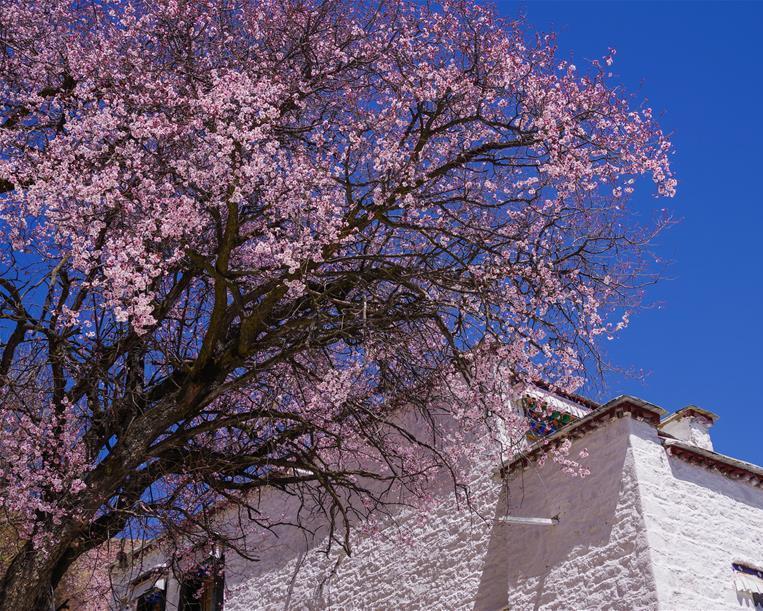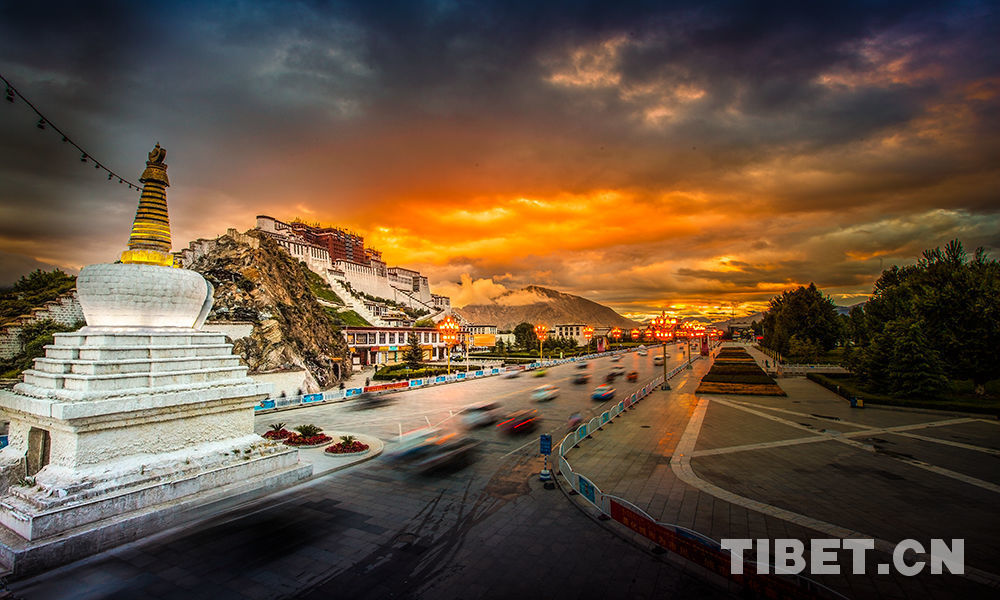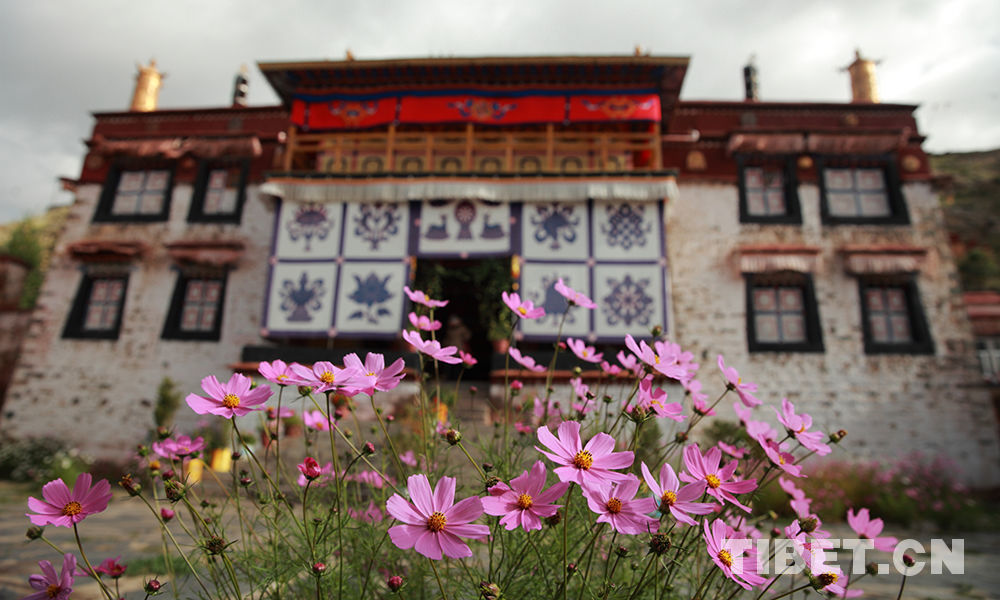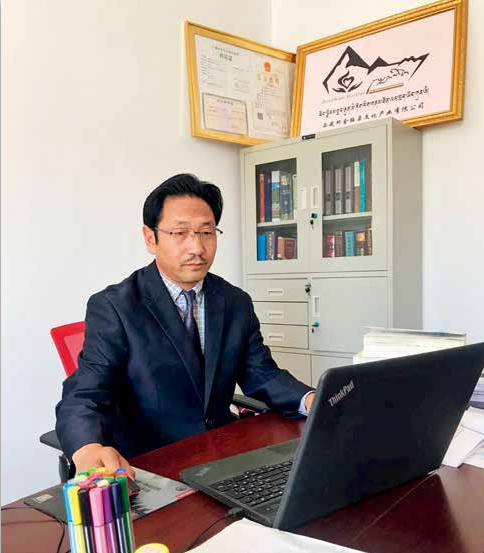Tibet's peaceful liberation, the Dalai clique's destiny
The Dalai Lama and his followers once again continued to clamor for "Tibetan independence", while all the Chinese people are celebrating the 60th anniversary of Tibet's peaceful liberation.
The "new constitution", which is actually a pseudo-constitution, promulgated by the Dalai clique, said that Tibet used to be an "independent country as big as China and India", and "China staged an armed intrusion into Tibet, violently suppressing the local Tibetans". All the above statements emphasized again the Dalai Lama would keep up his scheme of splitting up China's territory.
In 1979, Deng Xiaoping sharply pointed out that "the root problem to judge who is right is whether Tibet is a part of China". Unfortunately, the Dalai Lama is ending up with a failure when he started to deny China's sovereignty over Tibet and Tibet's peaceful liberation.
Tibet's peaceful liberation: irreversible trend of China's unification
Since modern times, Tibet has been continually attacked by the imperialist aggression as the rest of the country. For example, Britain staged two armed intrusions into Tibet in 1888 and 1903 respectively. After the Revolution of 1911, which toppled the last feudal dynasty of Qing in China, the whole China was in the face of internal disturbance and foreign aggression with a weak central administration.
Under such circumstances, the imperialist countries and the pro-Britian upper class of Tibet took advantage of the chance to seek for "Tibetan independence" to the utmost of their abilities. But it was finally put down by Tibetan people and people of other parts of China. The then Chinese government managed to maintain its sovereignty over Tibet by enacting law, establishing Mongolian-Tibetan Committee, dispatching army to Tibet, conferring titles of the Dalai Lama and the Panchen Lama and so on.
Any form of actions to separate Tibet from China has been vehemently opposed by the Chinese government and its people. In fact, no country in the world has ever acknowledged that "Tibet is an independent country".
"As far as I know, there is not a single country who has denied China's sovereignty over Tibet at any time," Jawaharlal Nehru, former premier of India said in his public speech in 1954.
After the founding of new China in 1949, it was reasonable and imperative for the Central Government of China to liberate Tibet as a part of China, and exercise sovereignty over it. It is only a matter of measures on whether to resolve the Tibet issue peacefully or not. Just as late Chairman Mao pointed out in October of 1950 that Tibet was the territory of China and the Tibet issue was the internal affairs of China. And the People's Liberation Army must get into Tibet.
The Central Government made policies for Tibet's peaceful liberation in order to minimize losses suffered by the Tibetan people from war, and learn from the experience of peaceful liberation in other areas of China. However, the pro-imperialist forces of Tibet's upper class took advantage of the defeat of the Kuomingtang and publicly promoted "Tibet independence". They expelled the staff of the national government to Tibet, sought international recognition, and purchased munitions from some other countries in order to hold back the entry of the PLA into Tibet by force. Due to the inefficacy of rounds of mediations, the Central Government decided to "promote negotiation by force". In October of 1950, the Chamdo Battle smashed the scheme of Tibetan reactionary forces to combat the PLA, and strengthened Tibet's patriotic forces, which made it possible to finally realize peaceful negotiation.
After the Chamdo Battle was over, the 16-year-old 14th Dalai Lama took over his reign in advance. However, surrounded by the imperialist forces and the the pro-imperialism upper class of Tibet, the Dalai was in a dilemma as to what to do. His trip to Yatung and staying near the border were aimed to both inspect the domestic situation, and seek assistance from the imperialists and an opportunity to flee abroad.
Under the political and military pressure of the Chinese government and the influence of the patriotic forces of Tibet’s upper class such as Ngapoi Ngawang Jigme and the 11th Panchen Lama, not a single country dare to support the "Tibet independence". In the end, the Tibet local government led by the Dalai Lama finally decided to assign delegates to negotiate with the Chinese Central Government in Beijing. After the "17-Article Agreement" was signed, the Dalai Lama sent a telegraph to Chairman Mao that the Tibet local government and the Tibetan people unanimously supported and would assist the PLA to enter Tibet, consolidate national defense, expel the imperialists out of Tibet and safeguard the unification of China's territory and sovereignty.
At this moment, the Dalai Lama made one of his few correct decisions in his life. The Central Government granted him with the highest political status including appointing him Vice Chairman of the Standing Committee of the National People's Congress when he attended its first conference in 1954, and Chairman of Tibet Preparatory Committee for the Establishment of Tibet Autonomous Region in 1956. Even when he fled abroad in 1959, his title of Vice Chairman had been retained until the year of 1964 by the Central Government. Unfortunately, it was the Dalai Lama himself who stained such a gleam of his life.
The bout spanned for half a century
The peaceful liberation of Tibet has not only resolved the issue of whether Tibet should be separated from China or still belongs to China, but also created the premise to settle the issue of the theocratic feudal serfdom in old Tibet.
The "17-Article Agreement" stipulated that in matters related to the reform in Tibet, there would be no coercion on the part of the Central Government, and the reform would be carried out by the Tibetan local government of its own accord. The Central Government waited patiently for the local government to conduct the reform, however, the reactionary upper class of Tibet did not want to suspend the reform, but would never take it at all.
They believed that an armed rebellion was the only way left to separate Tibet from China. Hence the bout lasting for half a century started off.
As early as 1952, the upper social strata of Tibet set up an illegal 'People's Congress", publicly opposing to the "17-Article Agreement", and to the Democratic Reform and the People's Liberation Army's entry into Tibet. Later, the armed forces were established to launch local insurgence, assaulting organs of the Central Government in Tibet and killing common Tibetan people. However, the 14th Dalai Lama made a big mistake in his life: he came closer to the rebellious forces step by step instead of standing by the people.
In 1959 with the support of the Dalai Lama, the rebels launched a full-scale armed rebellion in Lhasa against our motherland. After it failed, the Dalai Lama fled abroad with the assistance of CIA of the U.S., brazenly tearing up the "17-Article Agreement" on his way.
On March 28, 1959, the State Council pointed out that the armed rebellion launched by the upper class of Tibet attempted to safeguard the feudal serf system, split the country and oppose the democratic reform in Tibet, and decided to dissolve the former local government of Tibet.
In order to give the Dalai Lama a chance to turn back, the Central Government announced that he was forced to get away by rebels. However, he had gone too far and totally deviated the Central Government.
After the Dalai Lama escaped from Tibet, he announced to establish the "County of Tibet", and established the puppet government and puppet parliament, and issued the puppet constitution. He also set up a military base to launch armed attack harassing the border of China. For example, the number of soldiers in his "Special Border Army" commanded by the 14th Dalai Lama and foreigner forces reached 16,000 at best.
The Dalai Lama's such actions continued until 1960s. In 1964 the Central Government announced that the 14th Dalai Lama had deserted his motherland to serve for imperialism and foreign reactionary forces. Effective policies would be implemented to fight against the Dalai clique's separatist activities .
In 1974, the Nepalese government exterminated the rebels, thus the Dalai Lama's dream of separating China and restorating old Tibet was shattered completely.
From 1970s to early 1980s, the Dalai clique was ignored with rising China's international status and the changing international environment. The Dalai Lama complained in his autobiography that since 1970s, the U.S. government had recognized the Communist Party of China. Their supports for Tibet had been cut off at the same time, which proved that the support from the U.S. was only a part of its anti-Communist policies instead of really aiming to resume “Tibet's independence". Without the aid from the U.S., the Dalai clique had to take the "Middle Way" and "Nonviolent" strategies.
On the other side, to further persuade and help the Dalai Lama, the Communist Party of China agreed that Dalai's relatives and his delegation could visit China and know about the Tibet policy of the Central Government and the situation in Tibet. However, the Dalai clique made use of the opportunity to promote "Tibetan independence" among the ordinary people and made chaos.
In 1987, the Dalai Lama issued his standard version of the "Middle Way" strategy. The core content was to deny that Tibet is part of China, and require to realize the "Greater Tibet", which had never existed in history. Meanwhile, demanding a "high degree of autonomy", withdrawal of Chinese troops, driving all the Han people out of "Greater Tibet" were also written down in the documents. All the five items were aimed for "Tibet i
independence".
In the three consecutive years, the Dalai clique had caused a series of disturbances in Lhasa to call for "Tibet Independence". Untill March 5, 1989, a large-scale riot was stirred up. Three days later, the Central Government made a decision to enforce martial law in Lhasa, which gave a heavy blow to the separatist forces.
In 1989, the "June 4th" Incident occurred in Beijing and the former Soviet Union and the East Europe broke up. The Dalai Lama proud of his Nobel Peace Prize misjudged the situation in China. He vigorously asserted that the Communist Party of China would collapse in five to ten years, and the day of "Tibet independence" was coming soon. So he rejected any negotiation with "an collapsing regime".
In the same year, China's Central Government made an important decision to fight against the Dalai clique tit for tat, which became the turning point of its Tibet policy in the new era. When the situation in Tibet is getting better, the Dalai clique's "independence fantasy" was smashed and they were left in plight. So he had to replay his old tone of the "Middle Way".
The year of 2008 was regarded as a major breakthrough for the Dalai clique to seek "Tibet independence" by causing chaos, taking advantage of the chance that China hosted the Olympic Games to force the Chinese government to resolve the Tibet issue within the following two years.
The "Lhasa riots on March 14" plotted by the Dalai clique showed his desperate state of mind. Beyond his expectation, the chaos was quickly put under control under the leadership of the Central Government. The Beijing Olympic torch relay went completely successful. The Dalai Lama's "Middle Way" strategy thus, has become a laughingstock of the international community.
Fifty years’ activities of the Dalai clique showed they only assume that they are backed up by the Western forces, so they are persistent in pursuing resumption of the feudal serfdom in Tibet. In fact, the Dalai clique is unpopular and powerless. What they have, instead, are only some foreign alms and a few cheap "crowns". The Dalai Lama has repeatedly claimed himself as the "son of India", but it is a pity that no one in India would acknowledge that.
The "retirement" of the Dalai Lama cannot change the destiny of his clique
The Dalai Lama has to arrange his route of retreat for his small group after over half a century. Since this year, he announced his "retirement" in a high-sounding tone, ordered to modify the so-called constitution and set up the new puppet government. His purpose is so obvious. He merely wants to extend the lifespan of the puppet government after him, separate himself from new violent activities of "Tibet independence" and pave the way for his visit to western countries as a "pure religious figure". Anybody can find out his "retirement" is just a show. The Times of India commented that as far as the Dalai Lama is alive, it is still him that has the final say. And his proposal is to make preparations for the post-Dalai era. The Dalai Lama’s special representative to the US also pointed out that the leading role of the Dalai Lama would remain unchanged even he gets retired. And there is no need to make it clear in a written form. As expected, a statement saying the so-called constitution declared that 'the Dalai Lama is the patron and symbol of Tibet and the Tibetan people". It stipulated that the Dalai Lama still enjoyed the right to guide the "parliament" and Gaxag, and could direct big political and religious issues independently. For the Dalai Lama himself, he is also worried that people take a serious attitude toward his "retirement" and declared that he would never give up political and religious affairs for many times. All of these demonstrate that the Dalai Lama will never give up separatist activities and the control of his clique.
The so-called "retirement" didn't stop the Dalai Lama's steps. Instead he is more "hard-working". He has visited nearly 10 countries, with another 10 ahead. He has been begging to meet with foreign political figures, illegally accumulating public wealth and attacking the Chinese government, claiming to make troubles for China and ask the Chinese Communist Party to "retire" as he did. All of these did thrill some western and overseas activists for a while. However, it didn't disguise the anxiety and helplessness the Dalai clique has toward their future. One of his house speakers once said that the "retirement"of the Dalai Lama actually worries all Tibetans a lot.
According to the Dalai Lama's special envoy to Europe, the Dalai Lama's loss of political power has caused this “small world-in-exile" once again into crisis. This is because for dozens of years, the Dalai Lama has always been the spiritual leader and actual controller of his clique, the biggest "brand" to win both financial and political support from western countries, and also the most obedient tool of anti-China forces. It's not easy to build up such a figure and no person can replace him easily. No matter he retires or not, the Dalai Lama's supreme position won't change. Therefore, the clique's nature of theocracy and "separatism" won't change, either.
As for the so-called "government-in-exile", it is actually a rebellious organization totally against the Chinese Constitution and law. The illegal nature won't change no matter who is the head. The so claimed "new leaders" bluster of talking with the Chinese government "on behalf of the Tibetan people" or "rebuild Tibetan Kingdom" just exposed his conceit and ignorance.
For 60 years after Tibet's peaceful liberation, the federal serfdom has been replaced by socialism, and Tibet has witnessed a rapid growth in all aspects. The Tibetan people of all nationalities now understand more profoundly about the Dalai clique's reactionary nature. This is such a historical trend that no one, including the Dalai clique, can ever reverse. Neither "Tibet independence" nor the "Middle Way", neither the Dalai Lama being on the stage as a leader or manipulating from behind the scene, the Dalai clique is doomed to failure. As for the 14th Dalai Lama himself, unless he gives up all his separatist words and deeds, and meets the Chinese government's basic requirement, there is no other way out.
Your Comment
Name E-mailRelated News
-
;











